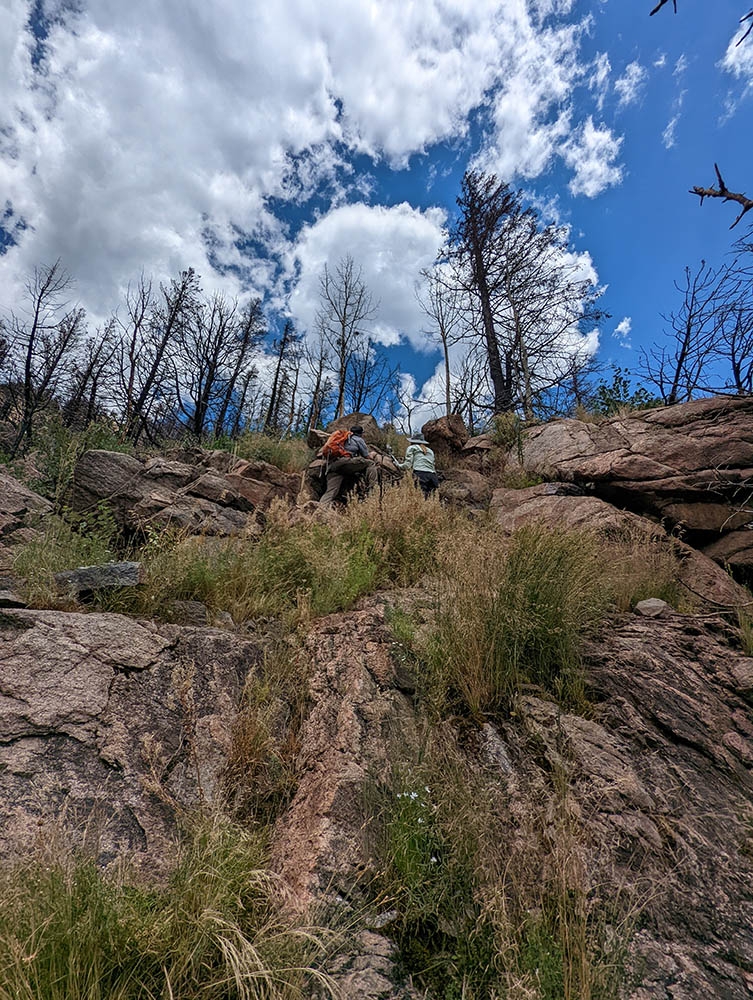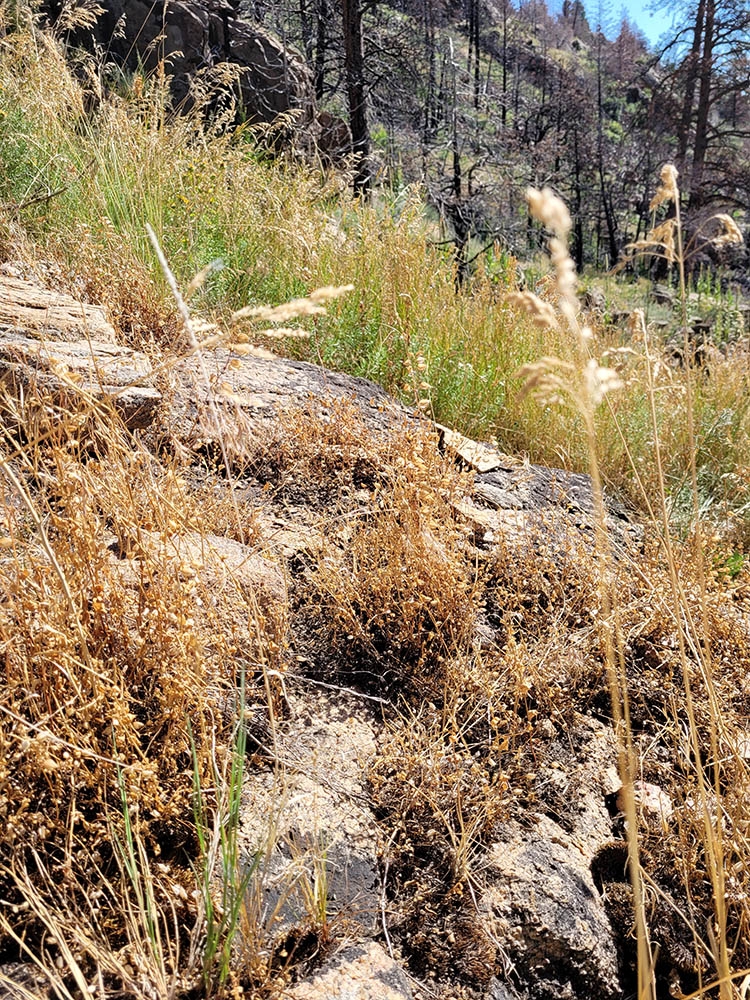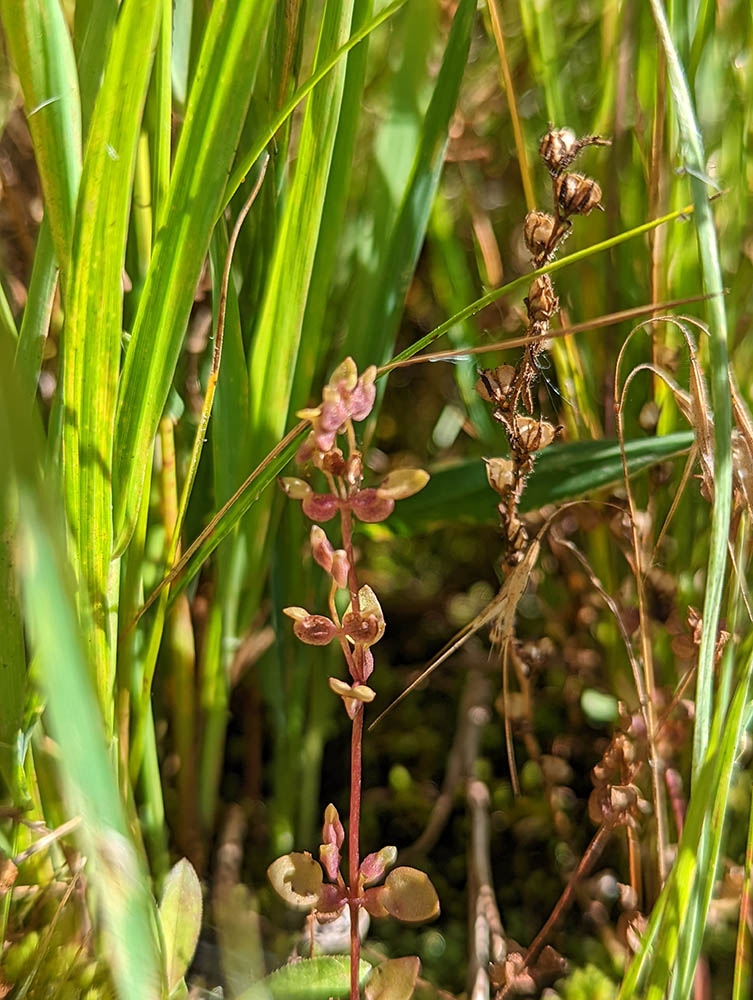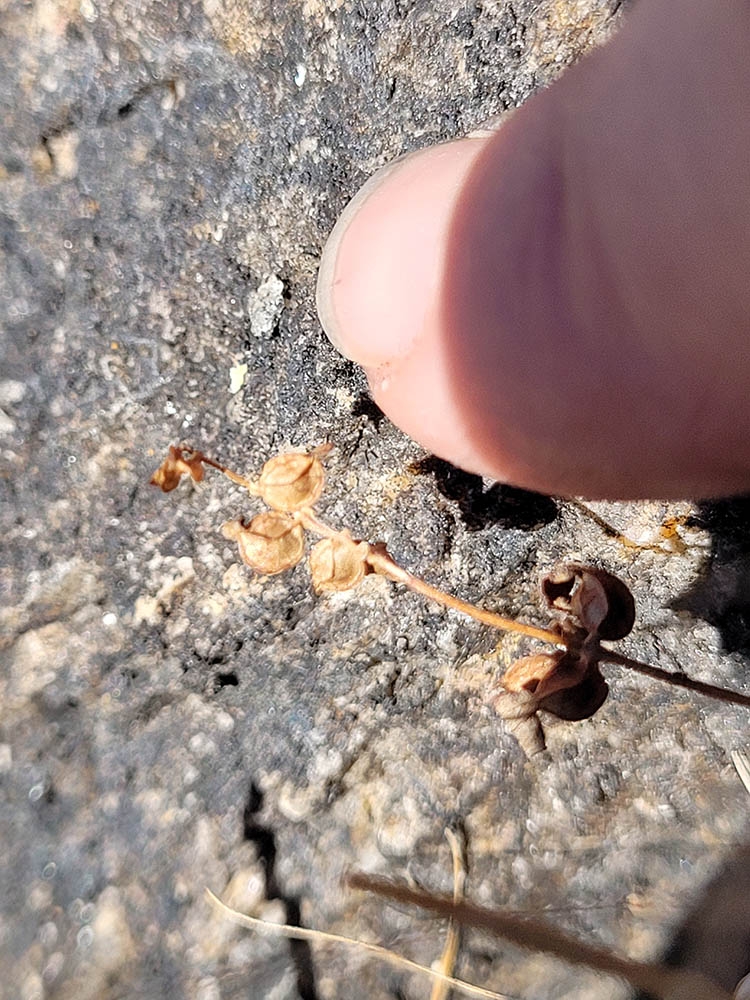Meet the Endemic Rocky Mountain Monkeyflower
Last August I spent a day scrambling up steep granite outcroppings perched high above a popular hiking trail in Rocky Mountain National Park. Colleagues and I were searching for patches of Rocky Mountain monkeyflower (Erythranthe gemmipera, family Phrymaceae), a diminutive plant with lemon-yellow blooms and unique reproductive structures called gemmae (hence its scientific name). This particular monkeyflower is endemic to Colorado, its distribution restricted to only a handful of populations in the state. Given this, it has a conservation status of both Globally Imperiled (G1) and State of Colorado Imperiled (S1), and any newly discovered population warrants documentation.
One reason for Rocky Mountain monkeyflower’s rarity is its narrow habitat requirements. I learned first-hand as I scaled craggy boulders, laden with abundant field gear that challenged my balance, that these plants weren’t going to give themselves up easily. When we finally found some patches, I was intrigued by the plants’ microhabitat conditions. Although growing on highly exposed granite (think wind, sunlight and generally desiccating conditions), the monkeyflower patches were nestled into sheltered cracks in the rock, often with evidence of seeping water. Plus, many of the patches were growing within spongy mounds of moss, which may have been acting as “nurse plants” that protect vulnerable, establishing plants.
If we think of these localized, benign conditions as inhabitable islands within an otherwise uninhabitable sea, it tells us something about Rocky Mountain monkeyflower’s ecology. Discrete patches of this annual forb recruit and die off each year, like the winking on and off of stars in the sky. If too many patches within an area wink off, the entire population could be at risk. As such, one of our goals while scouting was to geolocate the individual patches. That way, patch locations and the nearby environs can be revisited to assess long-term population dynamics, including the rate of patch loss and establishment.
Finally, let’s return to the asexual reproductive structures, or gemmae, that are characteristic of Rocky Mountain monkeyflower. If you’ve ever taken a botany class, you might remember learning about gemmae in relationship to bryophytes, or the non-vascular terrestrial plant group that includes mosses and liverworts. In the vascular plant world, gemmae are much less common. In Rocky Mountain monkeyflower, the gemmae are extremely small embryonic shoots that form inside a swollen petiole (the structure that subtends leaves). The gemmae can break off and are hypothesized to be water-dispersed, functioning as the main form of reproduction (plants appear to inconsistently flower or sexually reproduce). The gemmae likely don’t go very far when dispersed, suggesting another reason for the species rare status. Luckily, few people will ever encounter this newly discovered population given its inaccessible location. I was grateful to see it.
Photos by Christina Alba and Jennifer Ackerfield.
Gallery




Add new comment